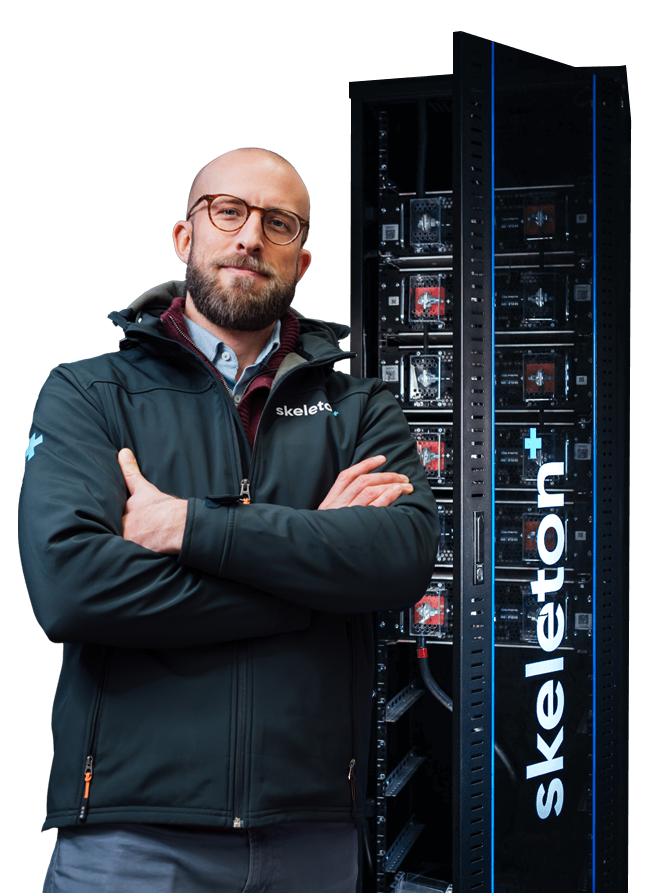
Ultracapacitors Superior to Batteries in Power Quality and Short-Term Backup Power Applications

Renewable energy production has issues to be solved before we can power the world with wind, sun, waves, and other renewables. First and foremost – natural resources are not always available, and they are unpredictable. In addition, the amount of available energy is never perfectly in tune with consumption.
An easy example would be solar energy: most abundant at noon and absent at night - not exactly the profile of our energy consumption. The instability of renewable energy sources necessitates energy storage – to store energy when production exceeds consumption, and to use it when demand exceeds production.
Different solutions have been developed for energy storage: pumped hydroelectric storage, batteries, flywheels, and as a newer alternative, ultracapacitor energy storage. The most important characteristics of ultracapacitor-based energy storage - long lifetime, reliability, high efficiency, and the ability to charge and discharge extremely rapidly - are ideally suited to solve the problems renewable energy production is struggling with.
This brings us to our SkelGrid product family, an ultracapacitor-based system designed for short-term backup power applications, and to increase power quality for production facilities and factories, data centers, hospitals, and other critical infrastructure. The modularity of SkelGrid offers advantages such as flexibility toward the power and capacity requirements but also decreases the risk of large investments in the grid.

What can SkelGrid do?
Power outages
Most power outages are short, under a minute, and therefore ultracapacitor-based Uninterruptible Power Supply, or UPS, solutions are perfectly suited to cover the short time power from the grid is not available. The benefits of using SkelGrid as a UPS solution come from the quick response time and high reliability, but it's also often the smartest choice economically for short-term bridging and backup power.
Peak shaving
The purpose of peak shaving is to reduce the demand on the grid at times of peak demand. By using SkelGrid for peak shaving, grid capacity and the size of the load-leveling energy storage installation can be optimized. SkelGrid can also be used to smooth sudden increases and decreases in power output to protect the grid, and the machinery the grid is powering.
Frequency regulation
The instability of renewable energy production and the changes in demand for energy result in variation of frequency in the grid. SkelGrid can help regulate the frequency in the grid by quickly balancing the frequency increase or decrease by charging or discharging the ultracapacitors.
Power quality
The importance of high quality of power is increasing, because the number of sensitive machinery and electronics has risen exponentially in the past decades. Power grids around the world are in need of heavy investment to increase the quality of power they can provide and to eliminate disturbances that can cause significant damage in for example production facilities. SkelGrid can offer rapid response to power quality issues such as voltage sags and short power outages, protecting the grid and the machinery powered by it.
SkelMod 102V modules are the building block for SkelGrid systems
As a modular system, SkelGrid is comprised of smaller building blocks, a specific module in the Skeleton portfolio: the SkelMod 102V module, in turn, uses SkelCap ultracapacitor cells, which are monitored and balanced by a control system. The rated voltage of a module is 102 V – for higher voltages, modules must be connected in series. SkelGrid comprises six SkelMod 102V modules in a 19’’ 600 mm deep industrial switchboard enclosure with integrated cooling panels, fuses, and switchgear.
The application time
The necessary application time of an energy storage system in grid applications can vary widely. Ultracapacitor systems are meant for relatively short applications, having the advantage of quick charge-discharge and high power. SkelGrid is a good example of how the application time depends on the power applied. With 216 cells connected in series, the nominal voltage of all SkelGrid models is 612 V and the usable energy 578 Wh for all of the models. Thus, the application time depends on the applied power, being the shorter at higher power ratings. The application time is further shortened by losses, especially at higher power levels.
Lifetime
The lifetime of an ultracapacitor ends when one end-of-life criteria is fulfilled, meaning that either internal resistance rises to 200%, or capacitance decreases to 80% of the initial value. The lifetime of ultracapacitors depends on circumstances such as the applied voltage and working temperature. Working temperature is especially important to consider for large ultracapacitor systems (such as SkelGrid), as it may limit the lifetime significantly. Cycling at high power levels rises the system’s temperature dramatically. To lower the working temperature and enhance system lifetime, a cooling system is necessary. In fact, SkelGrid can be commissioned with preinstalled forced air cooling, allowing use at higher power ratings.





